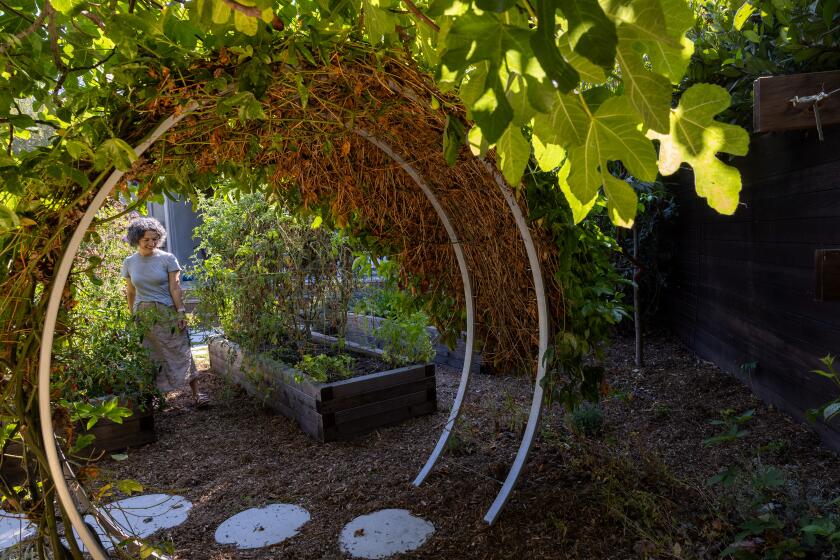Autumn ushers in planting season
There’s seldom frost on the pumpkin, and most of our foliage won’t color up until November (except in the high desert), but fall has arrived. The occasional Santa Ana wind may heat things up briefly, yet temperatures are starting to drop; by midmonth, it will be time to plant, plant, plant.
Cool-season color
Summer’s annual flowers are bright, but winter’s are graceful. Consider thin-stemmed poppies and ranunculus, or the exquisitely proportioned sweet peas and violas. There are dozens like these that must be fall-planted because they will grow only during the cool weather of fall, winter and early spring. Nurseries should be well stocked with young bedding plants this month, but don’t overlook those that are extra easy from seed, such as bright red corn poppies, dainty scarlet flax, larkspur, foolproof alyssum, surefire cerinthe and California poppies.
*
Tough bulbs
If you want to plant truly tough bulbs (and corms) that can happily grow with California natives and other drought-resistant plants, look for what’s known as Cape bulbs, originally from the Mediterranean-type climate of the Cape province of South Africa. Freesias are the best known, and the toughest -- and most fragrant -- of these are the plain white varieties that pop up in gardens year after year. Even tougher are the orange or yellow homeria and variously colored sparaxis that now come in satisfying single shades.
*
Fall’s the time
By planting in autumn, you save buckets of water and are almost guaranteed success. This is especially true for natives and other drought-tolerant things from similar Mediterranean climates; the only exceptions are subtropical species such as gingers and hibiscus. Fall planting takes advantage of naturally cooler temperatures, a lower sun and soaking rains.
*
A true autumn tale
Ten years ago, when our children were grown and out on their own, I completely redid our front yard, converting it from a kids’ lawn to a grown-ups’ garden. We killed off the lawn in August, built picket fences and prepared soil in September, and then put in a hundred or so young plants in late October, November and December. Things grew slowly but steadily, and by mid-spring the new garden looked at least a year old. The story illustrates the huge benefits of fall planting for do-it-yourself gardeners. Don’t let the opportunity slip by. This is the time to plant cool-season fescue lawns, ground covers, perennials, shrubs and especially trees.
*
Especially natives
With few exceptions, California native plants must be planted in late fall or winter because they are so sensitive to summer watering. Planted mid-October though January, they will quickly take hold and will need little water in summer, but wait until spring to plant and you can almost guarantee they will die their first summer. If you aren’t growing at least some natives in a dry part of the garden, you’re missing out on the heady scents of native salvias, the smooth red bark of manzanitas or the spectacular flowers on such things as Pacific Coast iris.
*
Wind warning
Expect powerful Santa Ana winds this fall and winter, and make sure plants are prepared. Temporary wilting from the heat is not the problem; it’s the force of the wind. Stake young trees so they don’t snap in the wind, and thin mature trees that might be vulnerable. To properly stake, space two 2-by-2-inch wood stakes several inches to either side of the trunk, with the tree tied between so it can sway a little.






